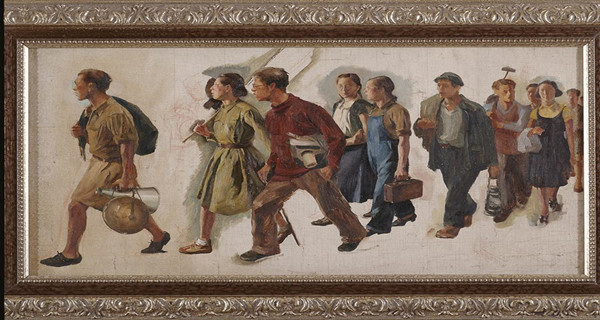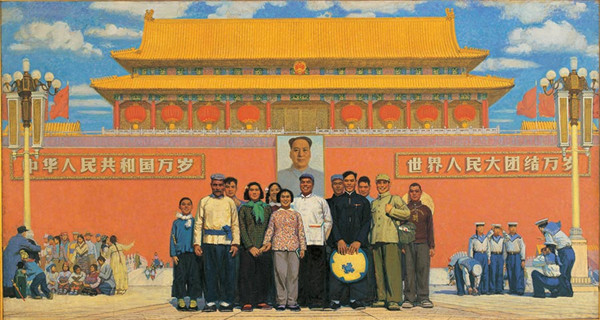The last work of Chinese oil painter Tang Yihe (1905-44) was a canvas titled July 7, 1937, named after the date of the Marco Polo Bridge Incident that marked the beginning of the War of Resistance against Japanese Aggression (1937-45).

Tang portrayed a group of college students who march along a street calling for people to stand up against the approaching invaders. The students in the picture were modeled on those who attended Wuchang Fine Arts School in Wuhan, in Central China's Hubei province, where Tang had taught since graduating from Paris' National School of Fine Arts in 1934.
The painting Tang produced in 1940 was a draft intended for a huge piece of work. But he was unable to do the work because of the war and a shortage of material.
Tang died in a shipwreck a year before the country won against the Japanese invaders. He may not be well-known to people today, but the painting is reminiscent of the patriotism of his generation when the country was facing a major crisis.

July 7, 1937 is on show with around 300 paintings and sculptures at Beijing's National Art Museum of China. The exhibition celebrates the 95th anniversary of the founding of the Communist Party of China.
Wu Weishan, the director of NAMOC, says the works on display span a century and reflect the creativity of generations of artists.
Hundreds of paintings and sculptures are on show in Beijing as part of celebrations to mark the 95th anniversary of the Communist Party of China. [Photo provided to China Daily]
The works which portray history, vary in scale-going from the grand portrayal of historical scenes to personal experiences-and pay tribute to those who sacrificed for the nation and its people.
The bulk of displayed works, occupying nine exhibition halls, are from NAMOC's collection and the rest are from other galleries, such as the museum of Beijing's Central Academy of Fine Arts, and from the artists themselves.
Among the works are many examples of red classics-artworks reflecting revolutionary activities and socialist development under the leadership of the CPC.
The oil painting, All People Are Great and Divine, was produced more than five decades ago by three painters, Hou Yimin, Deng Shu and Zhou Lingzhao, on a canvas that was 7 meters long.
It has late Chairman Mao Zedong in the center, surrounded by soldiers, farmers, workers and people from the 56 ethnic groups of China. It was inspired by a verse from Mao's poem of 1958 called Song Wen Shen (Send Away the God of Plague).
This year also marks the 80th anniversary of the end of the Long March, a two-year-long military retreat undertaken by the Communist troops to evade encirclement by the Kuomintang army. Artworks, which pay tribute to the Long March are also on show, including paintings and lithographs by Shen Yaoyi who revisited the motif for about four decades.
His best-known works, Red Ribbons of the Earth and Again We Make Strides, are on display.
There are also artworks, which hail grassroots figures who contributed to social progress.
In his oil painting of 1984 called Chalk Stick, Cao Xinlin from Zhengzhou, in Central China's Henan province, honors teachers.
The work features a white-haired teacher who stands near a large blackboard. Dressed in a plain suit, he holds a book in his left hand and a chalk stick in his right hand.
The blackboard takes up nearly three fourths of the composition.
"It feels like a wide silver screen. It is also the teacher's monument, where he keeps writing notes and erasing them," says Cao.
He adds that the works also reflect the advances in Chinese fine art.
All this, he believes, will leave viewers moved.
If you go:
9 am-5 pm, closed on Mondays, until July 19. National Art Museum of China, No. 1 Wusi Dajie, Dongcheng District
Source: chinadaily.com




